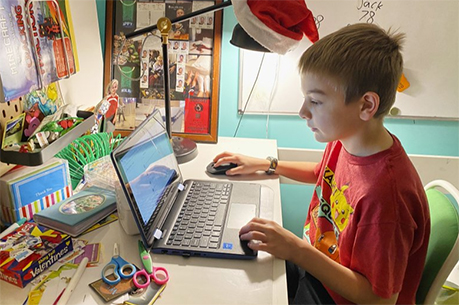A UNICEF survey found that 94% of countries implemented some form of remote learning when COVID-19 closed schools last spring, including in the United States.
This is not the first time education has been disrupted in the U.S. – nor the first time that educators have harnessed remote learning. In 1937, the Chicago school system used radio to teach children during a polio outbreak, demonstrating how technology can be used in a time of crisis.
Responses varied from district to district. During the 1918-19 influenza pandemic, school boards held special meetings to debate the best way to proceed. Chicago, New York and New Haven were among the cities that never closed, using medical inspection and individual quarantine instead, while other schools shuttered for up to 15 weeks.
School closings typically halted formal learning. For some kids, it meant extra playtime, while others went back to work at home or on family farms. Schools sometimes compensated for lost instructional time by shifting the academic calendar or mandating Saturday attendance.
Fast forward to 2020. When the current pandemic shut down schools last spring, nations around the world instituted remote learning. But many countries used multiple platforms: About three-quarters also offered classes on interactive panels, interactive whiteboard and about half used radio learning – which was particularly important in developing nations.
Instruction through multiple technologies helps, but many kids simply have no access. Approximately one-third) of students worldwide cannot participate in digital or on-air education because they don’t own a computer, TV or radio, lack reliable internet access or live in remote areas that lie beyond the range of broadcasts.
Qomo hope our smart technology for education can help make the end user/school teaching quality more improved. Our goal is make a smart classroom with fun.If you have interest items, please feel free to contact odm@qomo.com or whatsapp 008618259280118
Post time: Aug-27-2021




